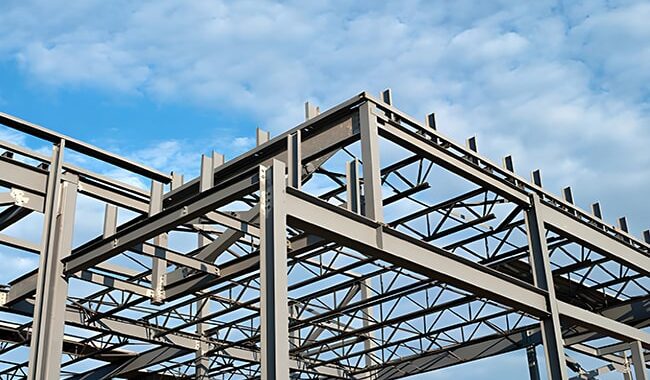A steel frame is a structure made of steel, usually connected by welding, bolting, or riveting steel beams, columns, bracing,…
Steel structure bridges refer to bridges whose main load-bearing structure uses structural steel. The beam and the leg or pier (pedestal) body form a rigid connection. Due to the consolidation of the pier and beam, the beam and pier are stressed. The pier not only bears the vertical pressure caused by the load on the beam but also the bending moment and horizontal thrust.
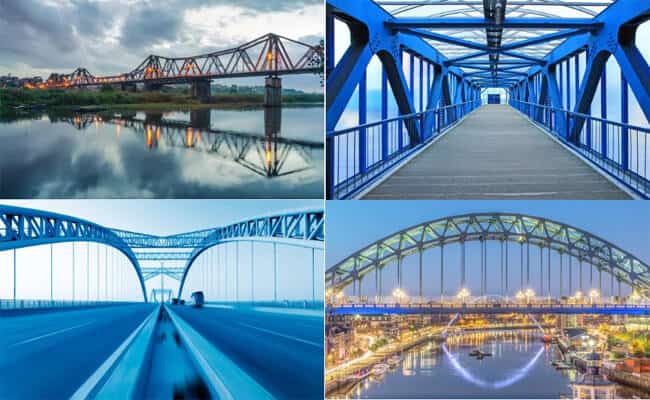
The structural forms of steel structure bridge:
The structural forms can be divided into portal rigid frame bridges, inclined leg rigid frame bridges, T-shaped rigid frame bridges, and continuous rigid frame bridges.
The main beams of steel structure bridges generally need to withstand positive and negative bending moments, and the cross-section should be box-shaped. In the type cross-section, the stress of the main beam of the continuous steel structure bridge is the same as that of the continuous beam, and the cross-sectional form and size are the same as that of the continuous beam.
Classification of steel structure bridges:
1. Suspension bridge.
Suspension bridges are generally long-span with a theoretical maximum span of up to 4 kilometers. They are also one of the preferred types of bridges over a kilometer. The suspension bridge supports the upper part of the bridge through the main cable on the cable tower and the cables anchored on both banks.
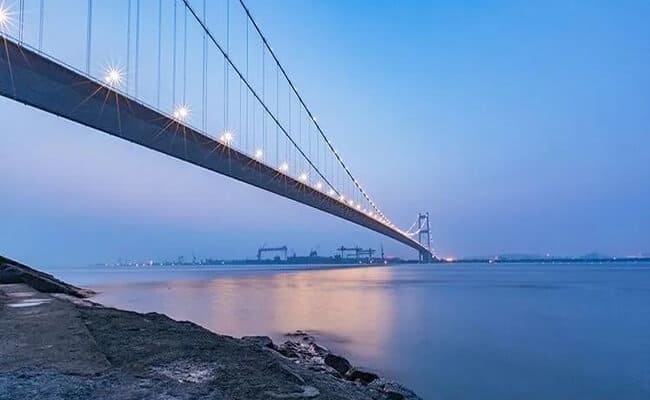
The cable is the most essential load-bearing component. Due to the force balance condition, its shape forms a nearly parabolic cable shape from the middle to both banks. A suspension rod is hung from the cable to suspend the bridge deck, and stiffening beams are provided between the suspension rod and the bridge deck. Combining the two can effectively reduce the deflection deformation of the bridge caused by the load.
2. Cable-stayed bridge.
Also known as a cable-stayed bridge, its structure is relatively simple, mainly composed of stay cables, main beams, and cable towers. This bridge fixes all wires through the bridge tower and is connected to the beam body through the cables for pressure-bearing purposes.
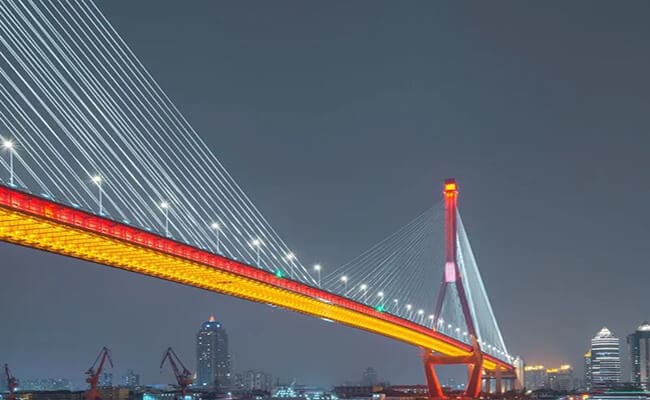
In cable-stayed bridges, cables serve as multi-span elastically supported continuous beams instead of piers. This method of building a bridge can effectively reduce the internal bending moment of the beam and, at the same time, reduce the height of the building. The overall structure is lighter and consumes less material.
3. Arch steel structure bridge.
Arch steel bridge is also one of the most common steel structure bridges. Its load-bearing structure is mainly arch ribs, which bear axial force and have little or no bending moment. In the construction of steel arch bridges, the central arch is made of multiple steel pipes, and the cross beams and central arch can be hoisted and welded on site separately. This can effectively solve the problem of overweight one-time hoisting and greatly facilitate on-site construction. Shortening the construction period also plays an important role.
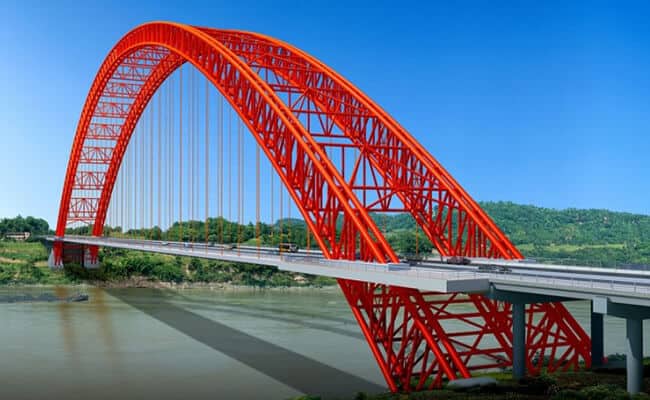
Advantages of steel structure bridges:
Steel’s tensile, compressive, and shear strengths are relatively high, and the steel components have small cross-sections and are lightweight. It has high strength and is suitable for building bridges with heavy loads; its lightweight can reduce the foundation load and cost and is easy to transport and hoist.
Steel’s excellent plasticity and toughness make steel bridges have good seismic resistance.
Because steel has good plasticity and toughness, it can absorb more energy through the deformation of the structure under earthquake action. At the same time, it has the toughness to be used repeatedly, thus significantly improving the seismic performance of the steel structure. Earthquake resistance and wind resistance are the guarantee of bridge safety. The excellent seismic resistance of steel structure bridges has expanded their scope of use, especially in high-intensity earthquake areas.
The construction period is short.
The materials of the steel structure can be rolled into a variety of profiles, and the processing is simple and rapid; the transportation volume of building materials is small, and the construction site occupies a small area; sporadic components can be made on site, with simple connections, convenient installation, and a short construction period.
The quality of steel bridges is easy to ensure.
Steel structural components are generally manufactured and processed in factories with a high degree of industrialization and high precision.
Steel structure bridges, such as strengthening, heightening, and widening the road surface, are easy to modify during use. Changes are relatively easy and flexible.
The steel structure is an environmentally friendly product. The old components removed from the steel bridge can be resmelted, which saves energy and aligns with sustainable development policies.
The pipeline layout is convenient. There are many holes and cavities in the structural space of the steel bridge, which makes the layout of pipelines more convenient, and the replacement and repair of pipelines are more convenient.
In conclusion
Applying steel structures in bridges has the advantages of high strength, lightness, flexibility, fast construction, easy maintenance, good durability, sustainability, and earthquake resistance. These advantages make steel structures an essential choice in modern bridge engineering, able to meet various complex design requirements and provide reliable transportation infrastructure.












